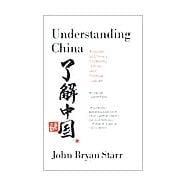
| List of Tables | p. ix |
| List of Maps | p. xi |
| Introduction | p. 3 |
| Geographical Inequalities | p. 19 |
| Patterns from the Past | p. 40 |
| China's Political System: The Party-State and the Power Grid | p. 54 |
| China's Economy: Who Owns What, Who Works Where, and Who Makes the Decisions | p. 72 |
| The Chinese Armed Forces | p. 90 |
| Sources of Rural Discontent | p. 108 |
| China's Cities: Unemployment, Corruption, and Anomie | p. 127 |
| The Centrifugal Forces of Regionalism | p. 146 |
| Han and Non-Han: The Divisive Forces of Ethnicity | p. 162 |
| The Challenge of Environmental Degradation | p. 176 |
| One Billion Plus: Controlling Population Growth | p. 191 |
| Human Rights and the Rule of Law | p. 204 |
| Intellectual Freedom and Chinese Education | p. 220 |
| Artistic Freedom and China's Contemporary Culture | p. 235 |
| Hong Kong and Macao: The Special Administrative Regions | p. 253 |
| Democratization on Taiwan: Model or Rival? | p. 275 |
| China's Foreign Relations | p. 300 |
| Conclusion: China in the Twenty-first Century | p. 318 |
| Bibliography | p. 327 |
| Index | p. 349 |
| Table of Contents provided by Syndetics. All Rights Reserved. |
The New copy of this book will include any supplemental materials advertised. Please check the title of the book to determine if it should include any access cards, study guides, lab manuals, CDs, etc.
The Used, Rental and eBook copies of this book are not guaranteed to include any supplemental materials. Typically, only the book itself is included. This is true even if the title states it includes any access cards, study guides, lab manuals, CDs, etc.